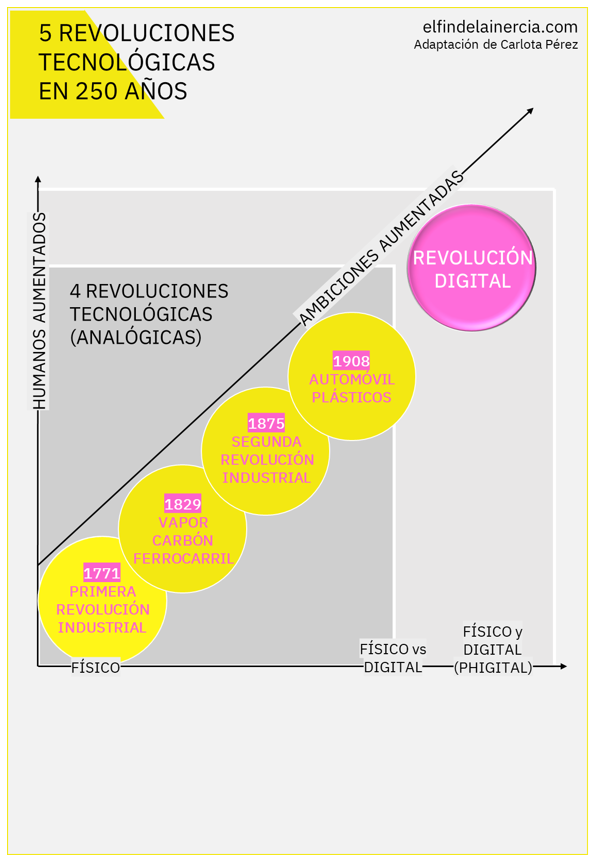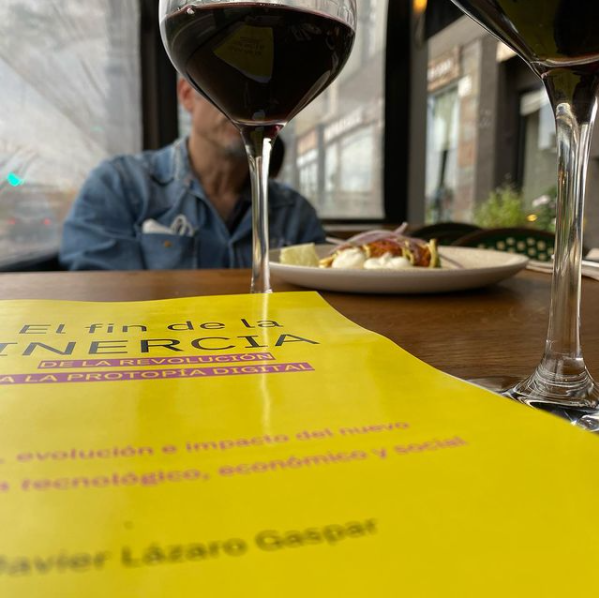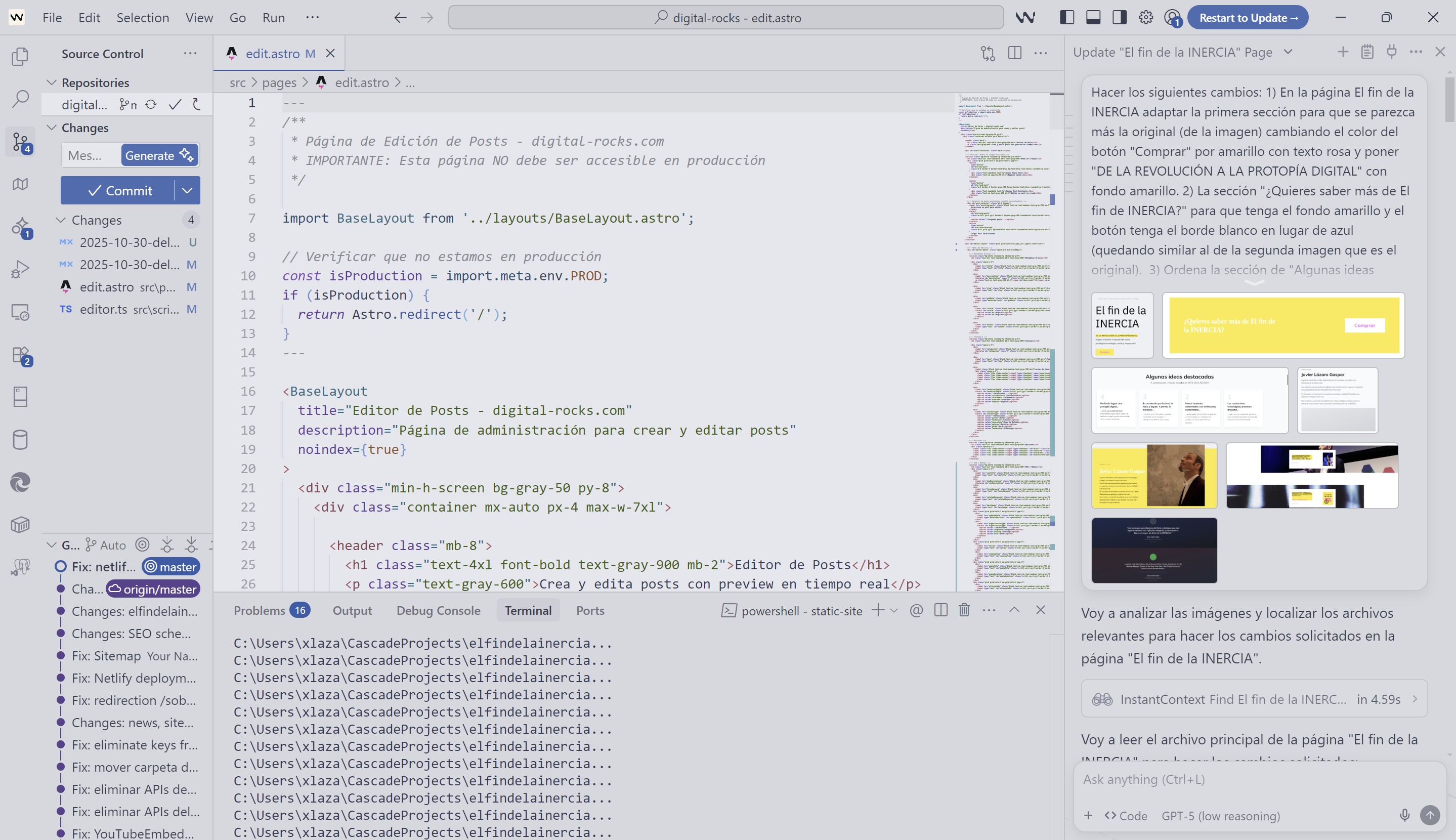How to Write a Popular Science Essay?

In 2019, tired of the catastrophic visions of the future that await us, I decided to write a book that presented a more optimistic perspective. A vision in which technology helps us improve and enhances us, a vision whose outcome I am about to publish under the title “The End of INERTIA”.
In this post, I will summarize my experience over these two years in case it serves as help or encouragement to those undergoing a similar process. It may not be a guide on how to write a popular science essay, but rather a practical description of how I have done it.
THE ESSENTIAL MOTIVATION
Perhaps the most important aspect.
Do not seek to write an essay if you are not motivated.
If you start writing a book, and this is something all the authors I have spoken with agree on, you will dedicate many hours and a lot of effort. It can be a hobby, but it must become a habit (or an addiction), and for that, you need motivation.
In my case, the motivation for “The End of INERTIA” was to counter essays like those of Jaron Lanier (see “Who Controls the Future?”) or Gerd Leonhard (see “Technology vs Humanity”) in which a dystopian future is described. A future in which individuals will be subjected to technology and the malevolent minds that control it.
I acknowledge that I am caricaturing these and other similar essays. Their understanding of reality, their perspective on the future, and the maturity of their thinking are very interesting. But it is also a fact that they largely overlook the benefits that technology has and continues to provide.
The documentaries on this subject are even more concerning, making me feel like a secondary character (the one who always dies) in a science fiction movie.
In general, they tend to minimize:
- That this is not the first Technological Revolution we are facing, and in all previous cases, the outcome has been an improved society.
- That as individuals and as a society, we are already enjoying benefits generated by the Digital Revolution.
- And that we, as individuals and collectively, have the power to direct the development of technology and its application with our decisions. We are not passive actors but protagonists with our ambitions and ideals.

The dystopian future described by Blade Runner
THE TIME TO START WRITING
In the summer of 2019, I was tired and unmotivated to continue with this blog, but I wanted to share my vision. The posts felt too short to convey what I wanted, and WordPress bored me. I thought about switching to Medium, but it wouldn’t change the essence.
I also considered abandoning it, but I ended up reviewing some published posts, others unfinished, and an immense inventory of ideas that I wanted to share. I
I gathered everything into a document that became the seed of “The End of INERTIA.”
EVEN A CATALOG REQUIRES STRUCTURE
I started writing without structure.
It was the natural evolution of the blog, writing about what I felt like without a clear thread linking it all together.
Months later, when I had about 50 pages, I realized that the content was interesting, but it was a collage without structure. Before continuing to write, I needed to create a narrative thread and take stock of the content I wanted to incorporate.
The guiding thread I decided on was to demonstrate that we are facing something new for our generation, but not in our history. I continued by describing the origin and reasons for the change, ultimately concluding with a call to action: let us be aware of the importance of our decisions and seize the opportunity to create a better society.
With this direction set, I felt more at ease. I started sticking Post-its with the content ideas that I believed fit best in each stage. My goal was not to finalize the table of contents but to establish the main direction and topics to work on.
THE WRITING PROCESS
I think I had never written 300 pages, and to be honest, I had never considered it as a goal. I began to write about the ideas described on each of the Post-its in a disjointed manner. I wasn’t writing a book but rather extended yet disconnected posts.
This was important because the time I had to write was limited and inconsistent. Some weeks I managed to carve out 1 or 2 hours before going to bed, other weeks I could dedicate an entire day on the weekend, and many others, nothing at all. Not having to maintain that initial connection between ideas allowed me to be more productive, set short-term goals, and achieve them.
Writing was a challenge that at times became frustrating. It was not easy to face a blank document, and on more than one occasion, I thought about giving up. Despite this, the volume of what I had written and the effort I had put in pushed me to continue. Listening to music while I wrote helped me relax and concentrate; it was at that moment that I decided each chapter would be introduced by a song. It had to be a song related to the topic that had also helped me through the bumps in the process.
You won’t miss that a large part of these two years has been during the COVID-19 pandemic. We have lived through tough times, and this surely reflects in the pace and content of the essay itself. I have not shied away from this because I believe it positions the content in a specific historical, economic, and social moment.
ONCE AGAIN, THE STRUCTURE
Once I had written the ideas in disjointed documents, it was time to connect them. I did this sequentially and gave it a first complete reading: a disaster!
The disjointed ideas one after the other did not maintain a common story but rather resembled a chaotic collage. We could consider it a sum of stories, a compilation of varying interest, but I did not convey
Here’s the translated blog post content:
to what I was looking for. It was time to reinforce the thread connecting the ideas and eliminate the fluff that was diverting me from the story. I also needed to better develop those ideas that did not have the importance in the book that they held in my mind. The moment had come to write the first chapter, the introduction that would aim to put all the previous content into context. It was also time to create the index and search for a title. Once again, rock came to my rescue in this case, drawing from one of my go-to albums: Inercia by Lagartija Nick (1992).
GRAPHIC RESOURCES
During the writing process, I had incorporated some graphics that helped to understand complex concepts or explain the sequentiality of certain events. I felt this was an important part, but I didn’t want to dedicate too much time to it. Seeing them all together again resulted in chaos.
It was time to redo them all, seeking a common structure, a coherence. Something that maintained the original simplicity of considering them as an accompaniment that should not overshadow the written content but that were clear, complete, and visually appealing.

Graphic resources from The End of INERCIA
REVISIONS, REVISIONS, AND MORE REVISIONS
About 18 months had passed, and I had the first version of what was starting to become a book.
At that moment, a wave of euphoria hit me. Printing it for the first time and reading it led me to the conclusion that it wasn’t as bad as I had thought in my head. Many aspects needed polishing, much to improve, but it wasn’t that bad.
This revision was followed by three more. After the third, I concluded that I had paid for much worse books.
In parallel to my revisions, there were other external ones that were much more important than mine:
- Ana’s, who once again encouraged me to continue with ideas, opinions, and nuances.
- Ángel’s, who, in addition to providing comments on content, helped me with the form to meet the standards of any publisher.
LOOKING FOR A PUBLISHER FOR THE END OF INERCIA
Once again, a frustrating experience to which I, in my case, had paid far too little attention. My recommendation at this point is that if you are looking for a publisher, you should do so well in advance since their timelines will not meet your expectations.
In my case, after a timid attempt thanks to Luis and Juanpe, I decided that I was not going to wait. In the book, I talk about the tendency we have to not wait, to want everything to be immediate, and waiting several months for someone to read a draft and give you their opinion was not in my plans.
A publisher provides many aspects that Amazon does not: professional reviewers (I have been lucky enough to have one), presence in bookstores, marketing, management, etc.
But for the impatient, Amazon is the solution. It allows for self-management of publication and even lets you print drafts on paper, reproducing the buying and reading experience that your readers will perceive in the future.
Readers. Waiting time from when you request a copy until you receive it: 4 days.

Mini-improvised celebration with the first complete printed version
THE PRESENTATION THAT HAS NOT BEEN
One of the frustrations of the process. I was particularly excited about organizing a presentation to gather colleagues, friends, and family as a celebration to hit the publish button together. It was supposed to be very soon, on a special date, September 21.
Unfortunately, the logistical complexities brought on by COVID-19 have led me to cancel it.
I will publish first and perhaps hold a celebration later when capacities are no longer limited to 50% and it is possible to serve some tapas and wines in a more normal setting.
THE VERTIGO OF COMING OUT OF THE CLOSET
After 2 years of enjoying and suffering with my hobby, I find myself on the brink of publication.
Since there is no presentation, I have taken a few more days, leaving myself the weekend of September 24 to finalize details and publish on the 26th.
It is a moment of vertigo.
The euphoria of having (almost) fulfilled the challenge is mixed with the fear of whether it will live up to my own expectations. In light of the fear that anxiety might paralyze me in this leap into the void, I sought ways to ensure there was no turning back:
- Decide the date in advance, even without knowing if I will be ready.
- Tell everyone my intentions so that there is no turning back. This post is part of that strategy.
I do not aim for large sales, but I do want to provide value. It has provided me with much, helping me reflect on the world we are heading towards and the attitude we take towards it. If those who read it, whether they agree with my approach or not, find it helpful for reflection, the expectation will be fulfilled.
In the meantime, I combat fear by polishing hundreds of details, publishing the website, or drafting this very post.
MONETARY ASPECTS OF A POPULAR SCIENCE ESSAY
Although it is said that talking about money is ugly, finances are always present.
If I consider the money invested and the hours enjoyed (even discounting the suffered ones), I believe that as a hobby it is inexpensive. Certainly, cheaper than skiing and similar to playing the guitar. Perhaps after publication, I should invest in marketing if I want to increase sales, but again, I will think about it later.
What I have decided is that the little profit this initiative generates will be donated entirely to an organization dedicated to improving the quality of life for people with neurological damage.
This is a topic I am particularly sensitive about, affecting people of all ages and likely to impact most of us at a time when our (physical) life expectancy continues to rise.
I have a few in mind, but nothing decided. If you want to propose an association with this goal, do not hesitate to contact me.
LESSONS LEARNED
If it is
You’re writing your own popular science essay, and I hope my experience helps you avoid the mistakes I made. In case you’re not clear on it, here are five clear points:
- Understanding what it means to write the essay will take a lot of time and effort; you must be motivated for when your strength fails you or circumstances hinder you.
- Start with the idea (I had it clear) and set a first structure before writing; it will save you a lot of effort.
- Think about graphic resources while you write. It helped me, but at the same time, not having defined a standard initially forced me to redo them all.
- If you want to publish with publishers, don’t leave it until the end: it’s a slow process and requires time. On the other hand, if you want to publish on Amazon, study how to do it: formats, sizes, etc., and start writing about the templates that the platform provides.
- Look for ways to combat the vertigo of publication. Your book may be better or worse, but it’s yours, and fear cannot paralyze you.
I also recommend that you read others and pay attention. In my case, this is how I learned the little I know about all this.
REFERENCES
This post is very different from what I usually write. It is a personal experience, and therefore I have used few references, but in any case, here they are:
- El fin de la INERCIA
- Digital-rocks: ¿Quién controla el futuro?
- Digital-rocks: Tecnología vs Humanidad

How to write an essay? The end of INERTIA
ALICE IN CHAINS
Other classics from the 90s, in this case with Nutshell. I have always liked the collection of technical books “in a Nutshell” (like “Linux in a Nutshell” or “Python in a Nutshell”). Perhaps this post is something like an “Essay in a Nutshell.”
I leave you with the strength and darkness of the voice of the late Layne Staley in his unplugged version.
Related posts

From COBOL to Agentic AI: Transforming the Software Lifecycle
Evolution of the software lifecycle applying AI and Agentic AI

Digital Transformation: Beyond Technology
In Digital Transformation, purpose and culture are more important than technology itself.

BIG TECH CAPITALISM by Evgeny Morozov
'Big Tech Capitalism' shares many of the issues I describe in 'The End of Inertia' but does not approach them in the same way, as its author starts from an e...
All opinions expressed on this blog are personal and do not represent those of any company or organization with which I collaborate.
